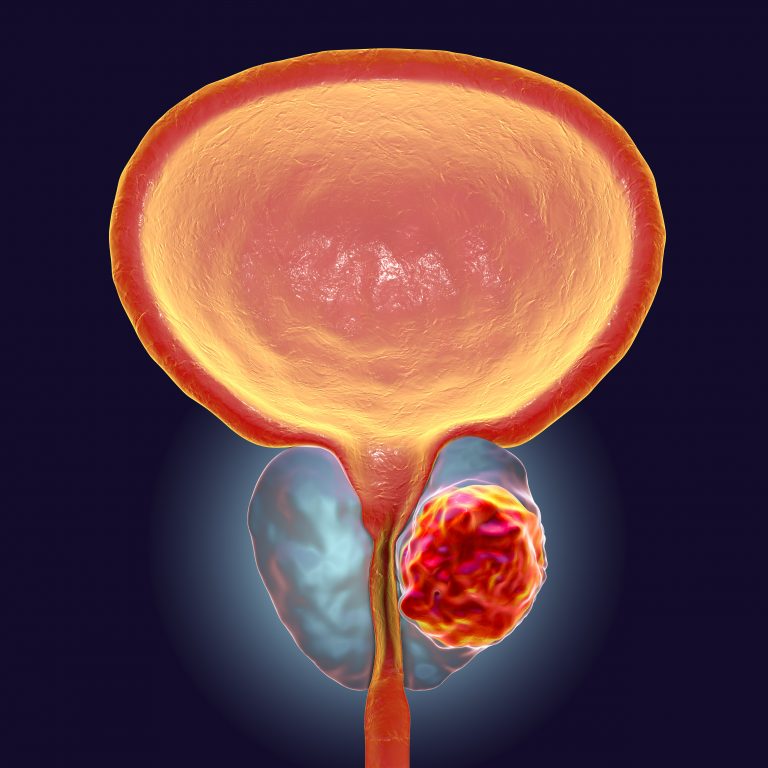
Researchers at UCLA Jonsson Comprehensive Cancer Center led a large international study providing what may be the first evidence that a recently approved imaging technique, PSMA PET/CT, improves risk stratification and long-term prognostic estimation for patients with high-risk prostate cancer whose conventional imaging showed only localized disease.
“Our findings also suggest that previously undetected, non-localized disease may be the primary driver of outcomes in this high-risk population,” said Amar Kishan, chief of the Genitourinary Oncology Service for the Department of Radiation Oncology at the David Geffen School of Medicine at UCLA and the UCLA Jonsson Comprehensive Cancer Center. He is the senior author of the report which appears in JAMA Network Open.
Early experience with prostate-specific membrane antigen (PSMA) positron emission tomography/computed tomography (PET/CT) indicates it can detect low-volume, non-localized prostate cancer that is not seen with conventional imaging, direct, but there is little evidence since the technique has only been available in the United States less than a year, said Kishan. Previously, the researchers described a PSMA PET/CT-specific tool they created called a ‘nomogram’ that takes a variety of variables into account to predict the probability of finding non-localized disease.
In this new study, the researchers —representing 15 centers in the U.S., Canada, Norway, Germany, and Spain— looked at the prognostic significance of the PSMA nomogram on long-term, clinically meaningful outcomes, then compared its prognostic capabilities with those of other, traditional risk-stratification tools.
“The PSMA nomogram was designed to predict the positivity of PSMA PET/CT at initial diagnosis, without regard to eventual clinical outcomes, but interestingly, this PSMA PET/CT-based tool provided better risk discrimination than existing tools that were designed specifically to predict clinical outcomes,” said Michael Xiang, assistant clinical professor in the Department of Radiation Oncology at the David Geffen School of Medicine at UCLA.
Xian added, “This may speak to the significance of using PSMA PET/CT findings as a marker of overall disease course, and our results contribute to a growing body of data supporting the clinical use of this technique in the initial evaluation and management of high-risk patients.” Xiang is the corresponding author and a co-first author of the paper.
The primary study included a cohort of 5,275 patients with high-risk or very high-risk prostate cancer based on National Comprehensive Cancer Network criteria. The patients were treated at 15 centers between 1995 and 2018 using radiation or surgery. The researchers evaluated the prognostic significance of the PSMA nomogram (and, by proxy, PSMA PET/CT itself) on long-term, clinically meaningful endpoints, including distant metastasis, prostate cancer-specific mortality, and overall survival.
In statistical analyses, the PSMA nomogram was significantly prognostic of all clinical endpoints, regardless of treatment type. Findings were validated externally using two large registry-based cohorts: The Surveillance, Epidemiology, and End Results (SEER) Program database (23,989 patients), and the National Cancer Database (88,909 patients). Nomogram risk was significantly prognostic in age-related regression analyses.
“PSMA PET is now part of the National Comprehensive Cancer Network guidelines as a replacement of other front-line imaging tools. With insurance coverage, this game-changer technology will ultimately become part of the routine staging of prostate cancer patients,” said Jeremie Calais, co-senior principal investigator on this study, assistant professor and director of the Clinical Research Program of the Ahmanson Translational Theranostics Division of the Department of Molecular and Medical Pharmacology at UCLA.
The FDA approved the first PSMA PET/CT imaging drug, Gallium 68 PSMA-11, in December 2020, with initial approval going to UCLA and UCSF. A second drug, Pylarify, was approved in May 2021.













